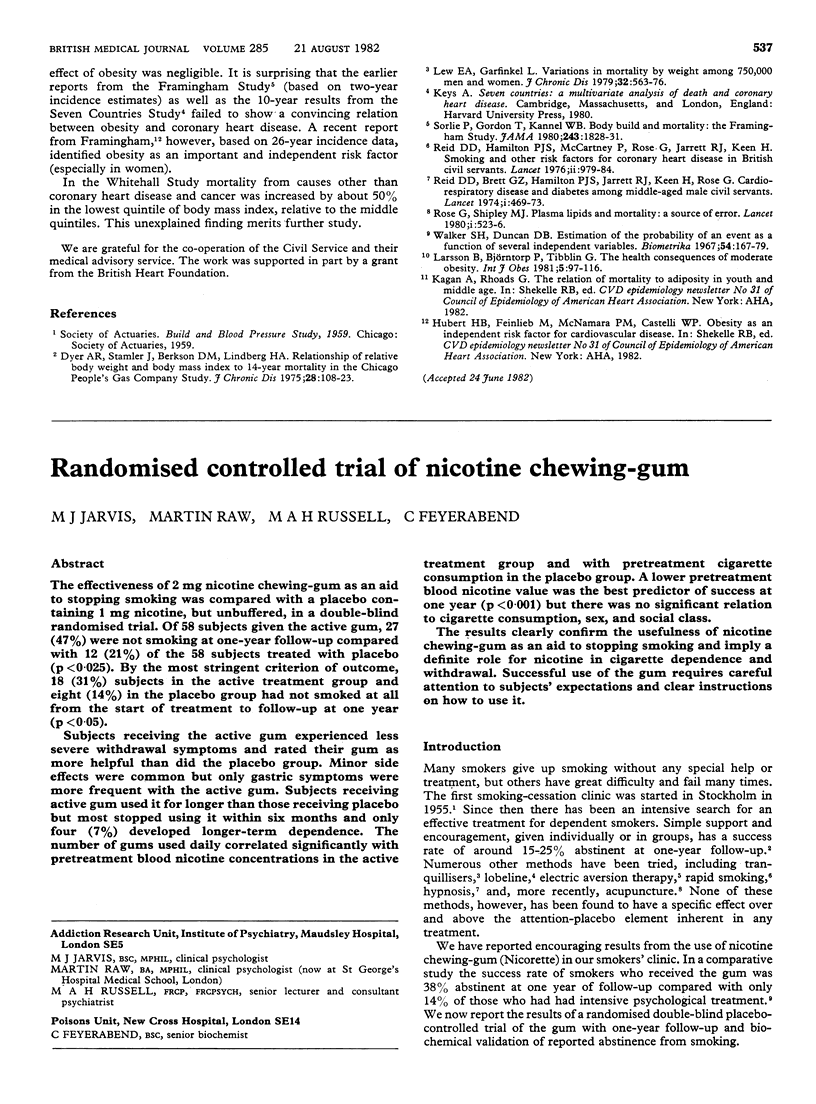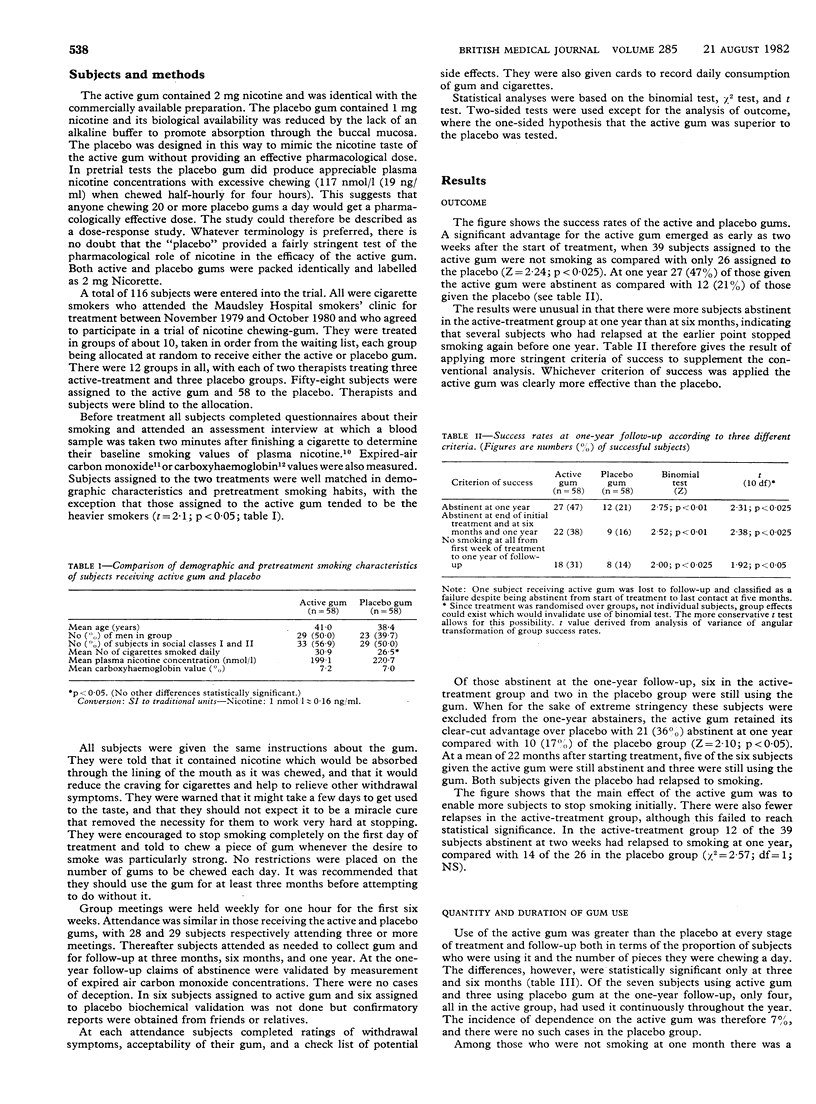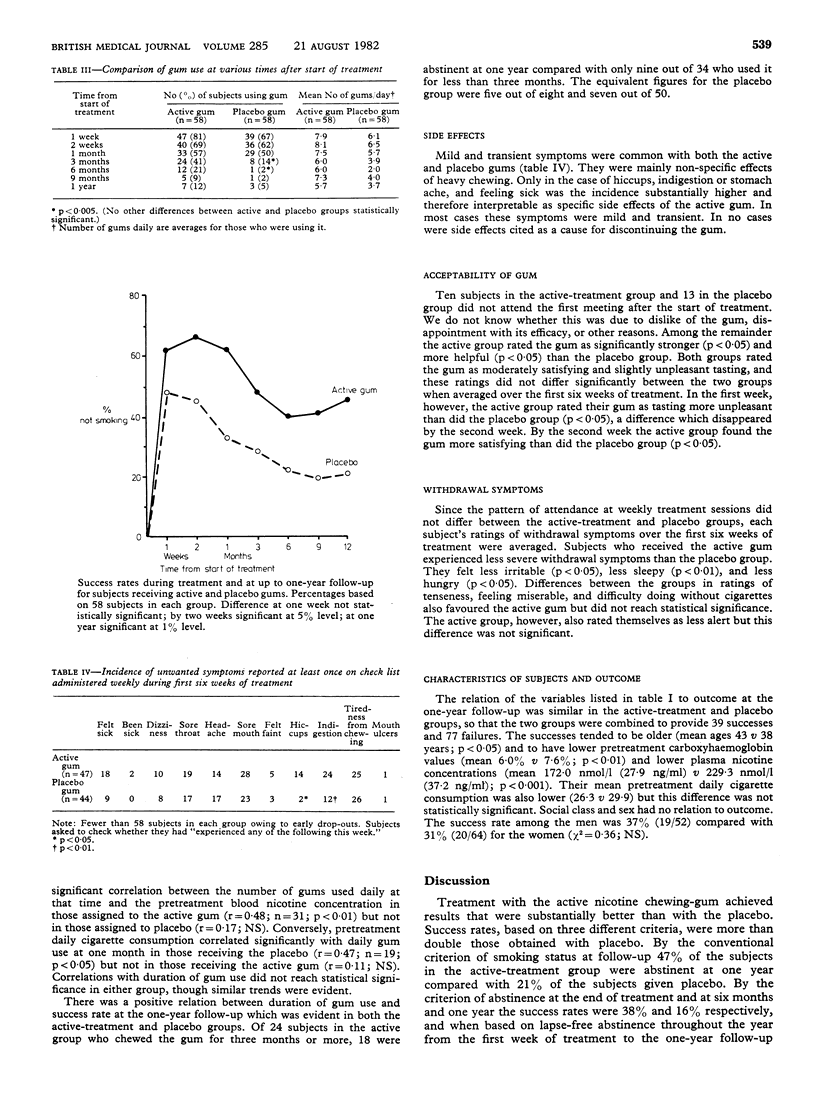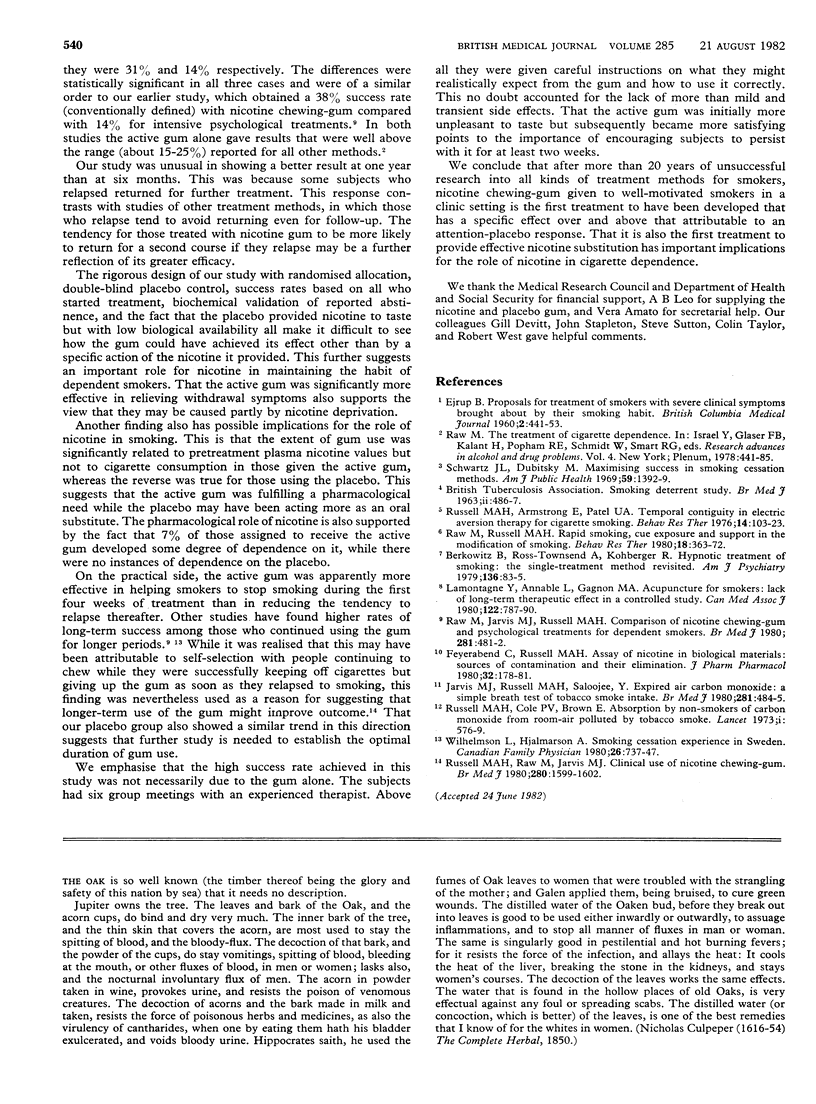Abstract
The effectiveness of 2 mg nicotine chewing-gum as an aid to stopping smoking was compared with a placebo containing 1 mg nicotine, but unbuffered, in a double-blind randomised trial. Of 58 subjects given the active gum, 27 (47%) were not smoking at one-year follow-up compared with 12 (21%) of the 58 subjects treated with placebo (p less than 0.025). By the most stringent criterion of outcome, 18 (31%) subjects in the active treatment group and eight (14%) in the placebo group had not smoked at all from the start of treatment to follow-up at one year (p less than 0.05). Subjects receiving the active gum experienced less severe withdrawal symptoms and rated their gum as more helpful than did the placebo group. Minor side effects were common but only gastric symptoms were more frequent with the active gum. Subjects receiving active gum used it for longer than those receiving placebo but most stopped using it within six months and only four (7%) developed longer-term dependence. The number of gums used daily correlated significantly with pretreatment blood nicotine concentrations in the active treatment group and with pretreatment cigarette consumption in the placebo group. A lower pretreatment blood nicotine value was the best predictor of success at one year (p less than 0.001) but there was no significant relation to cigarette consumption, sex, and social class. The results clearly confirm the usefulness of nicotine chewing-gum as an aid to stopping smoking and imply a definite role for nicotine in cigarette dependence and withdrawal. Successful use of the gum requires careful attention to subjects' expectations and clear instructions on how to use it.
Full text
PDF



Selected References
These references are in PubMed. This may not be the complete list of references from this article.
- Berkowitz B., Ross-Townsend A., Kohberger R. Hypnotic treatment of smoking: the single-treatment method revisited. Am J Psychiatry. 1979 Jan;136(1):83–85. doi: 10.1176/ajp.136.1.aj136183. [DOI] [PubMed] [Google Scholar]
- Feyerabend C., Russell M. A. Assay of nicotine in biological materials: sources of contamination and their elimination. J Pharm Pharmacol. 1980 Mar;32(3):178–181. doi: 10.1111/j.2042-7158.1980.tb12885.x. [DOI] [PubMed] [Google Scholar]
- Jarvis M. J., Russell M. A., Saloojee Y. Expired air carbon monoxide: a simple breath test of tobacco smoke intake. Br Med J. 1980 Aug 16;281(6238):484–485. doi: 10.1136/bmj.281.6238.484. [DOI] [PMC free article] [PubMed] [Google Scholar]
- Lamontagne Y., Annable L., Gagnon M. A. Acupuncture for smokers: lack of long-term therapeutic effect in a controlled study. Can Med Assoc J. 1980 Apr 5;122(7):787–790. [PMC free article] [PubMed] [Google Scholar]
- Raw M., Jarvis M. J., Feyerabend C., Russell M. A. Comparison of nicotine chewing-gum and psychological treatments for dependent smokers. Br Med J. 1980 Aug 16;281(6238):481–482. doi: 10.1136/bmj.281.6238.481. [DOI] [PMC free article] [PubMed] [Google Scholar]
- Raw M., Russell M. A. Rapid smoking, cue exposure and support in the modification of smoking. Behav Res Ther. 1980;18(5):363–372. doi: 10.1016/0005-7967(80)90001-7. [DOI] [PubMed] [Google Scholar]
- Russell M. A., Armstrong E., Patel U. A. Temporal contiguity in electric aversion therapy for cigarette smoking. Behav Res Ther. 1976;14(2):103–123. doi: 10.1016/0005-7967(76)90065-6. [DOI] [PubMed] [Google Scholar]
- Russell M. A., Cole P. V., Brown E. Absorption by non-smokers of carbon monoxide from room air polluted by tobacco smoke. Lancet. 1973 Mar 17;1(7803):576–579. doi: 10.1016/s0140-6736(73)90718-6. [DOI] [PubMed] [Google Scholar]
- Russell M. A., Raw M., Jarvis M. J. Clinical use of nicotine chewing-gum. Br Med J. 1980 Jun 28;280(6231):1599–1602. doi: 10.1136/bmj.280.6231.1599. [DOI] [PMC free article] [PubMed] [Google Scholar]
- Schwartz J. L., Dubitzky M. Maximizing success in smoking cessation methods. Am J Public Health Nations Health. 1969 Aug;59(8):1392–1399. doi: 10.2105/ajph.59.8.1392. [DOI] [PMC free article] [PubMed] [Google Scholar]


